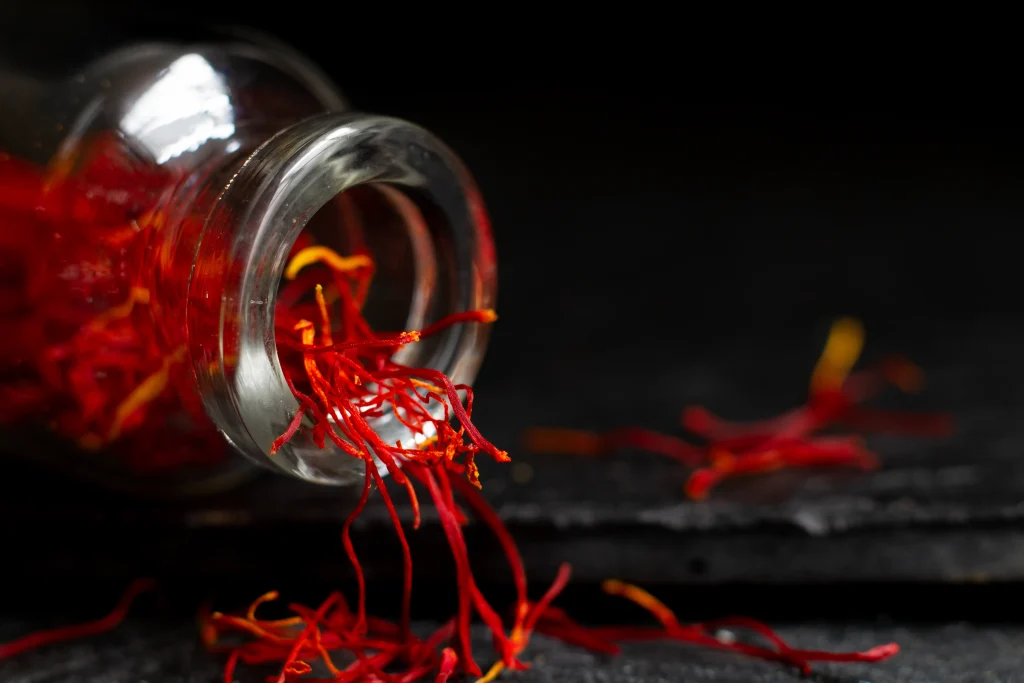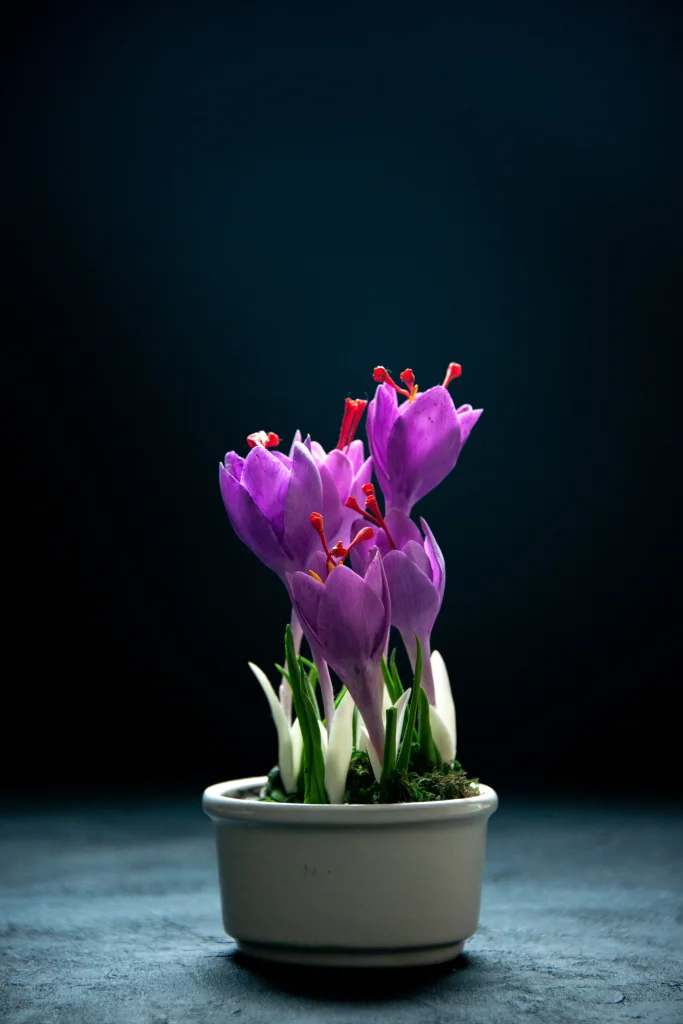Saffron, often referred to as “red gold,” is a spice treasured for its rich flavor and high value. Traditionally grown in Kashmir, this sought-after spice is gaining attention from farmers around the world who are bringing saffron cultivation indoors. By following some simple yet effective methods, you can grow your own saffron in a small space at home. Here’s how you can get started.

1. Create the Ideal Growing Environment
The first step to growing saffron indoors is setting up a controlled environment that mimics the climate conditions of Kashmir. Since saffron requires a cool temperature, you’ll need to create a space where you can regulate heat and humidity. For example, Harsh Patil, a farmer from Maharashtra, used aeroponics—a technique that involves growing plants in air or mist without soil—to grow saffron indoors.
To recreate the right conditions, insulate the room using thermocol or other materials that help retain temperature. You’ll need equipment such as chillers and humidifiers to regulate the temperature between 15-20°C during sprouting and 5-7°C during the flowering period. Grow lights can also help to maintain an optimal environment.
2. Source Quality Saffron Bulbs
Once the environment is ready, it’s time to get your saffron bulbs. It’s best to use bulbs of the ‘mogra’ variety from Kashmir, known for their high quality. Saffron bulbs typically cost between Rs 600-800 per kilogram. Before planting, ensure the bulbs are healthy by checking for any signs of rot. You can soak the bulbs in a neem oil solution to prevent fungal infections, and then dry them under a fan.
3. Ensure Perfect Climate Control
Maintaining the right temperature and cleanliness is critical to saffron’s success. As saffron grows without soil, aeroponics is a popular method where the plants get nutrients via air mists. Ensure the room is maintained at 60-70% humidity and limit external access to reduce contamination risks. Any bulbs affected by fungus should be treated quickly with neem oil.
4. Divide the Bulbs for Better Growth
Experienced saffron farmers, such as Vaibhav Patel, recommend dividing the bulbs into two batches. One batch should be placed in soil trays, while the other can go into wooden trays on racks with slots to allow air circulation. Both setups should be kept in a room where the temperature is strictly controlled. This setup can help ensure the saffron thrives.
5. Harvesting the Precious Spice
Saffron flowers bloom around October, and this is when you know it’s time for harvest. Each saffron flower contains delicate threads, known as stigma, which is what gives saffron its value. The flowers are carefully harvested by hand, and the threads are separated. After harvesting, dry the threads under a fan in a cool, dry place.

6. Prepare for the Next Harvest Cycle
Once you’ve harvested your saffron, replant the bulbs in soil with a mix of cocopeat to prepare them for the next growing cycle. Water the bulbs regularly, and they will grow and multiply over time. After about four months, the bulbs will have doubled, ready to bloom again in the coming cycle.
7. Understanding Costs and Profit Potential
While starting an indoor saffron farm can require an initial investment of around Rs 4 lakh, including the cost of saffron bulbs, the returns can be quite rewarding. Saffron can be sold for Rs 2.5 lakh per kilogram in wholesale markets, and can fetch up to Rs 6 lakh per kilogram in international markets. Considering the high returns, saffron farming can be a profitable venture with the right care and attention.
By following these simple steps, you too can grow your own saffron and turn it into a lucrative business. Whether you’re looking to cultivate a small batch for personal use or to start a commercial operation, saffron farming offers a rewarding opportunity.
